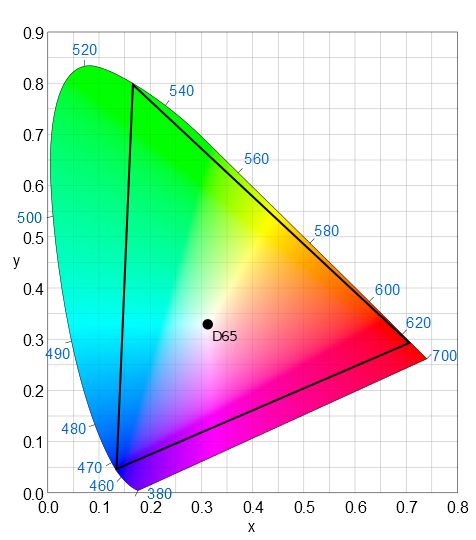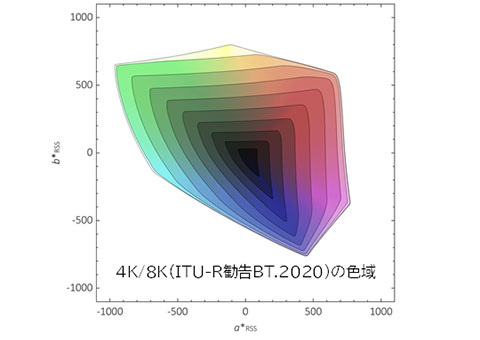A new gamut ring framework developed by NHK has been adopted as an international standard for visualising the range of reproducible colours.
The International Electrotechnical Commission (IEC), International Committee for Display Metrology (ICDM), and International Commission on Illumination (CIE) have all adopted the gamut ring framework.

NHK’s Science and Technology Research Laboratories developed the system that automatically measures the display colour gamut boundary and renders gamut rings.
The colour gamut is traditional represented by the area of a triangle connecting the points of the red, blue, and green primary colours in a chromaticity diagram.
The team at STRL argue a single-angle view in a 3D plot can often be misleading because parts of the gamut are always obscured from the view.
They have developed a method to convert the 3D colour gamut in a 2D format.
The gamut rings, so named because they resemble the rings found inside a tree trunk, invented by NHK can accurately represent a 3D colour gamut in a 2D diagram.

The gamut solid is cut into pieces at regular intervals of lightness (L*). Each piece is then stretched into a slice of unity lightness; the area of the slice corresponds to the volume of the piece.
Gamut rings are formed by placing one slice at the lowest lightness level, followed by positioning the other slices around the bottom slice consecutively, said NHK. The angle from the centre represents the hue such as red, green, and blue.
The team at NHK STRL believe gamut rings could potentially be applied in the design and evaluation of colour reproduction devices, such as displays and TVs.







